Entrepreneurial University Concept Review from the Perspective of Academicians: A Mixed Method Research Analysis
Abstract
:1. Introduction
- the first model shows the relationship in which the nation-state includes academia and industry and manages the relations between these two sectors;
- the second model denotes a system in which the state plays a less dominant role, the boundaries of each of the institutional areas are clearly defined and their relations with others are outlined;
- the third model is a development and innovation model where three constantly evolving domains complexly interact with each other at different levels flexibly and develop evolutionary pathways that achieve not only their own goals but also the finalized goals of the other two entities. This model, known as the triple helix model, that regulates some public policy in Europe, has become a normative theoretical construct [15,16].
2. Theoretical Background
3. Research Questions
- Is it possible to reveal the entrepreneurial (research) university approach, which came to the forefront in the academic world in the 2000s, considering the theoretical changes it went through, in which contexts it is studied in the literature, the main themes and the concepts with which they are studied, with the help of network analysis, density analysis and coding co-occurrence tables?
- With semi-structured interview questions created with the help of these concepts, which were revealed by taking expert opinions, how can implicit knowledge, which is obtained from in-depth interviews with academicians who had experiences such as consultancy in companies or entrepreneurship in techno parks, be incorporated into entrepreneurial (research) university components?
4. Material and Methods
4.1. Research Design
- data processing phase and knowledge discovery phase, in which the main components of the entrepreneurial university literature are revealed through analysis and focus group studies, with the findings obtained from the network analyses of the articles in the Web of Science Core Collection between 1975–2017 based on the keywords taken as basis in the literature;
- the field research phase with interview questions based on the obtained research university components;
- the last stage is where the components in which the code-occurrence models obtained from the literature and the code-occurrence models obtained from the interviews are compared and where the study is concluded by determining components in which the entrepreneurial university concept is evaluated by evaluating the different practices/understandings on institutions and understandings.
4.2. Data SOURCE and Analysis
- the articles about the entrepreneurial university were obtained through a systematic literature review. In the literature review section, following the methodology [32], the articles published in the Web of Science Core Collection between 1975–2017 were searched and themes and concepts of the entrepreneurial university approach were revealed in 617 articles;
- basic components of entrepreneurial university were determined based on the indexes produced in the country and abroad;
- the components of entrepreneurial (research) university paradigm were determined and obtained by density-network analysis with getting expert opinions in focus group studies, co-occurrence, and code-occurrence model analysis model.
5. Results
5.1. Findings of the Literature Review
- -
- the need to focus on entrepreneurial process competencies but also the usefulness of acquiring them, for the development of entrepreneurship learning progression [35];
- -
- the need to train students in order to face the main difficulties that the labour market and the social component are proposing to the educational environment [36];
- -
- the need to develop useful tools for assessing entrepreneurial skills that any interested person can accumulate during the training related to the educational period (pre-university and university) [37];
- -
- the construction of an entrepreneurial university requires an important governmental financing but also measures to support innovative activities, without neglecting the teaching and research components [38].
5.2. Findings of the In-Depth Interviews
6. Conclusions
Author Contributions
Funding
Institutional Review Board Statement
Informed Consent Statement
Data Availability Statement
Conflicts of Interest
References
- Etzkowitz, H.; Webster, A.; Gebhardt, C.; Terra, B.R.C. The future of the university and the university of the future: Evolution of ivory tower to entrepreneurial paradigm. Res. Policy 2000, 29, 313–330. [Google Scholar] [CrossRef]
- Davidescu, A.A.; Apostu, S.-A.; Paul, A.; Casuneanu, I. Work Flexibility, Job Satisfaction, and Job Performance among Romanian Employees—Implications for Sustainable Human Resource Management. Sustainability 2020, 12, 6086. [Google Scholar] [CrossRef]
- Mian, S.A. University’s involvement in technology business incubation: What theory and practice tell us? Int. J. Entrep. Innov. Manag. 2011, 13, 113–121. [Google Scholar] [CrossRef]
- Rothaermel, F.; Agung, S.; Jiang, L. University entrepreneurship: A taxonomy of the literature. Ind. Corp. Chang. 2007, 16, 691–791. [Google Scholar] [CrossRef]
- Etzkowitz, H. The norms of entrepreneurial science: Cognitive effects of the new university—Industry linkages. Res. Policy 1998, 27, 823–833. [Google Scholar] [CrossRef]
- Alan, H.; Köker, A.R. Structural Social Capital Studies in Management and Organization Literature: A Bibliometric Network Study. Cent. Eur. Manag. J. 2021, 29, 2–31. [Google Scholar] [CrossRef]
- Chesbrough, H.W. Open innovation: A new paradigm for understanding industrial innovation. In Open Innovation: Researching a New Paradigm; Chesbrough, H.W., Vanhaverbeke, W., West, J., Eds.; Oxford University Press: Oxford, UK, 2006; pp. 1–12. [Google Scholar]
- Perkmann, M.; Walsh, K. University-industry relationships and open innovation: Towards a research agenda. Int. J. Manag. Rev. 2007, 9, 259–280. [Google Scholar] [CrossRef]
- Chesbrough, H.W. Open Innovation: The New Imperative for Creating and Profiting from Technology; Harvard Business School Press: Boston, MA, USA, 2003; pp. 43–92. [Google Scholar]
- Vargo, S.L.; Lusch, R.F. Evolving to a New Dominant Logic for Marketing. J. Mark. 2004, 68, 1–17. [Google Scholar] [CrossRef]
- Srivastava, R.K.; Fahey, L.; Christensen, H.K. The resource-based view and marketing: The role of market-based assets in gaining competitive advantage. J. Manag. 2001, 27, 777–802. [Google Scholar] [CrossRef]
- Clark, B. The Entrepreneurial University: New Foundations for Collegiality, Autonomy, and Achievement, Higher Education Management. J. Programme Inst. Manag. High. Educ. 2001, 13, 9–24. [Google Scholar]
- Leydesdorff, L.; Etzkowitz, H. The Transformation of University-Industry-Government Relations. Electron. J. Sociol. 2001, 5, 1–17. [Google Scholar]
- Etzkowitz, H.; Stevens, A.J. Inching toward industrial policy: The university’s role in government initiatives to assist small, innovative companies in the United States. Sci. Technol. Stud. 1995, 8, 13–31. [Google Scholar] [CrossRef]
- Lefebvre, P.; Pallez, F.; Fixari, D. Competitiveness Clusters and New Approaches to Public Research: Uncertainties in the Development of the Triple Helix in France. In Proceedings of the Colloque International Regional Competitiveness Clusters and Economic Development—HEC Management School, Liège, Belgium, 2–3 March 2009. [Google Scholar]
- Leydesdorff, L.; Ivanova, I. “Open innovation” and “triple helix” models of innovation: Can synergy in innovation systems be measured? J. Open Innov. Technol. Mark. Complex. 2016, 2, 1–12. [Google Scholar] [CrossRef]
- Rukancı, F.; Anameriç, H. Ortaçağda İlk Üniversiteler: Studium Generale. Felsefe Dünyası (Engl. Philos. World) 2004, 39, 72–88. [Google Scholar]
- Wissema, J.G. Üçüncü Kuşak Üniversitelere Doğru, Çev.: Özyeğin Üniversitesi; Özyeğin Üniversitesi Yayınları: Istanbul, Turkey, 2009. [Google Scholar]
- Timur, T. Toplumsal Değiişme ve Üniversiteler; İmge Yayınları: Ankara, Turkey, 2000. [Google Scholar]
- Kuyel, M.T. Orta Çağ Felsefe Tarihi ve S.İ.E.P.M. Araştırma Ankara Üniversitesi Dil ve Tarih-Coğrafya Fakültesi Felsefe Bölümü Dergisi (Yayınlanmıyor). 1970, Volume 8, pp. 187–280. Available online: https://dspace.ankara.edu.tr/xmlui/handle/20.500.12575/60332 (accessed on 8 June 2022).
- Nybom, T. The Humboldt Legacy: Reflections on the Past, Present, and Future of the European University. High Educ. Policy 2003, 16, 141–159. [Google Scholar] [CrossRef]
- Carson, C.; Gubser, M. Science Advising and Science Policy in Post-War West Germany: The example of the Deutscher Forschungsrat. Minerva 2002, 40, 147–179. [Google Scholar] [CrossRef]
- Audretsch, D.B. From the entrepreneurial university to the university for the entrepreneurial society. J. Technol. Transf. 2014, 39, 313–321. [Google Scholar] [CrossRef]
- Mowery, D.C. The Bayh-Dole Act and High-Technology Entrepreneurship in U.S. Universities: Chicken, Egg, or Something Else? In University Entrepreneurship and Technology Transfer (Advances in the Study of Entrepreneurship, Innovation and Economic Growth); Libecap, G.D., Ed.; Emerald Group Publishing Limited: Bingley, UK, 2005; Volume 16, pp. 39–68. [Google Scholar] [CrossRef]
- Aldridge, T.T.; Audretsch, D. The Bayh-Dole Act and scientist entrepreneurship. Res. Policy 2011, 40, 1058–1067. [Google Scholar] [CrossRef]
- Kenney, M.; Patton, D. Reconsidering the Bayh-Dole Act and the Current University Invention Ownership Model. Res. Policy 2009, 38, 1407–1422. [Google Scholar] [CrossRef]
- Vargo, S.L.; Maglio, P.P.; Akaka, M.A. On value and value co-creation: A service systems and service logic perspective. Eur. Manag. J. 2008, 26, 145–152. [Google Scholar] [CrossRef]
- Maglio, P.P.; Spohrer, J. Fundamentals of Service Science. J. Acad. Mark. Sci. 2008, 36, 18–20. [Google Scholar] [CrossRef]
- Klucznik-Törő, A. The New Progression Model of Entrepreneurial Education—Guideline for the Development of an Entrepreneurial University with a Sustainability Approach. Sustainability 2021, 13, 11243. [Google Scholar] [CrossRef]
- Portuguez Castro, M.; Gómez Zermeño, M.G. Identifying Entrepreneurial Interest and Skills among University Students. Sustainability 2021, 13, 6995. [Google Scholar] [CrossRef]
- Portuguez Castro, M.; Ross Scheede, C.; Gómez Zermeño, M. Entrepreneur profile and entrepreneurship skills: Expert’s analysis in the Mexican entrepreneurial ecosystem. In Proceedings of the 2020 International Conference on Technology and Entrepreneurship—Virtual (ICTE-V), San Jose, CA, USA, 20–21 April 2020; pp. 1–6. [Google Scholar] [CrossRef]
- Schmitz, A.; Urbano, D.; Dandolini, G.A.; de Souza, J.A.; Guerrero, M. Innovation and entrepreneurship in the academic setting: A systematic literature review. Int. Entrep. Manag. J. 2017, 13, 369–395. [Google Scholar] [CrossRef]
- Hesse-Biber, S. Emerging methodologies and methods practices in the field of mixed methods research. Qual. Inq. 2010, 16, 415–418. [Google Scholar] [CrossRef]
- Kuckartz, U. Qualitative Text Analysis: A Guide to Methods, Practice and Using Software; Sage Publication Ltd.: London, UK, 2014. [Google Scholar]
- Mets, T.; Raudsaar, M.; Vahejõe, K.; Kaseorg, M.; Vettik-Leemet, P. Putting Entrepreneurial Process Competence into the Focus in Entrepreneurship Education: Experience from Estonian Universities. Adm. Sci. 2022, 12, 67. [Google Scholar] [CrossRef]
- Donoso-González, M.; Pedraza-Navarro, I.; Palferro-Fernández, L. Analysis of Entrepreneurial Education—Study of the Configuration of the Entrepreneurial Identity through the Acquisition of Crucial Transversal Competences for Future University Students. Educ. Sci. 2022, 12, 310. [Google Scholar] [CrossRef]
- López-Núñez, M.I.; Rubio-Valdehita, S.; Armuña, C.; Pérez-Urria, E. EntreComp Questionnaire: A Self-Assessment Tool for Entrepreneurship Competencies. Sustainability 2022, 14, 2983. [Google Scholar] [CrossRef]
- Budyldina, N. Entrepreneurial universities, and regional contribution. Int. Entrep. Manag. J. 2018, 14, 265–277. [Google Scholar] [CrossRef]
- Etzkowitz, H. Research groups as ‘quasi-firms’: The invention of the entrepreneurial university. Res. Policy 2003, 32, 109–121. [Google Scholar] [CrossRef]
- Kogut, B.; Zander, U. Knowledge of the firm, combinative capabilities, and the replication of technology. Organ. Sci. 1992, 3, 383–397. [Google Scholar] [CrossRef]
- Göktepe-Hulten, D.; Mahagaonkar, P. Inventing and patenting activities of scientists: In the expectation of money or reputation? J. Technol. Transf. 2010, 35, 401–423. [Google Scholar] [CrossRef]
- Collini, S. What Are Universities For? Penguin Books Ltd.: London, UK, 2012. [Google Scholar]
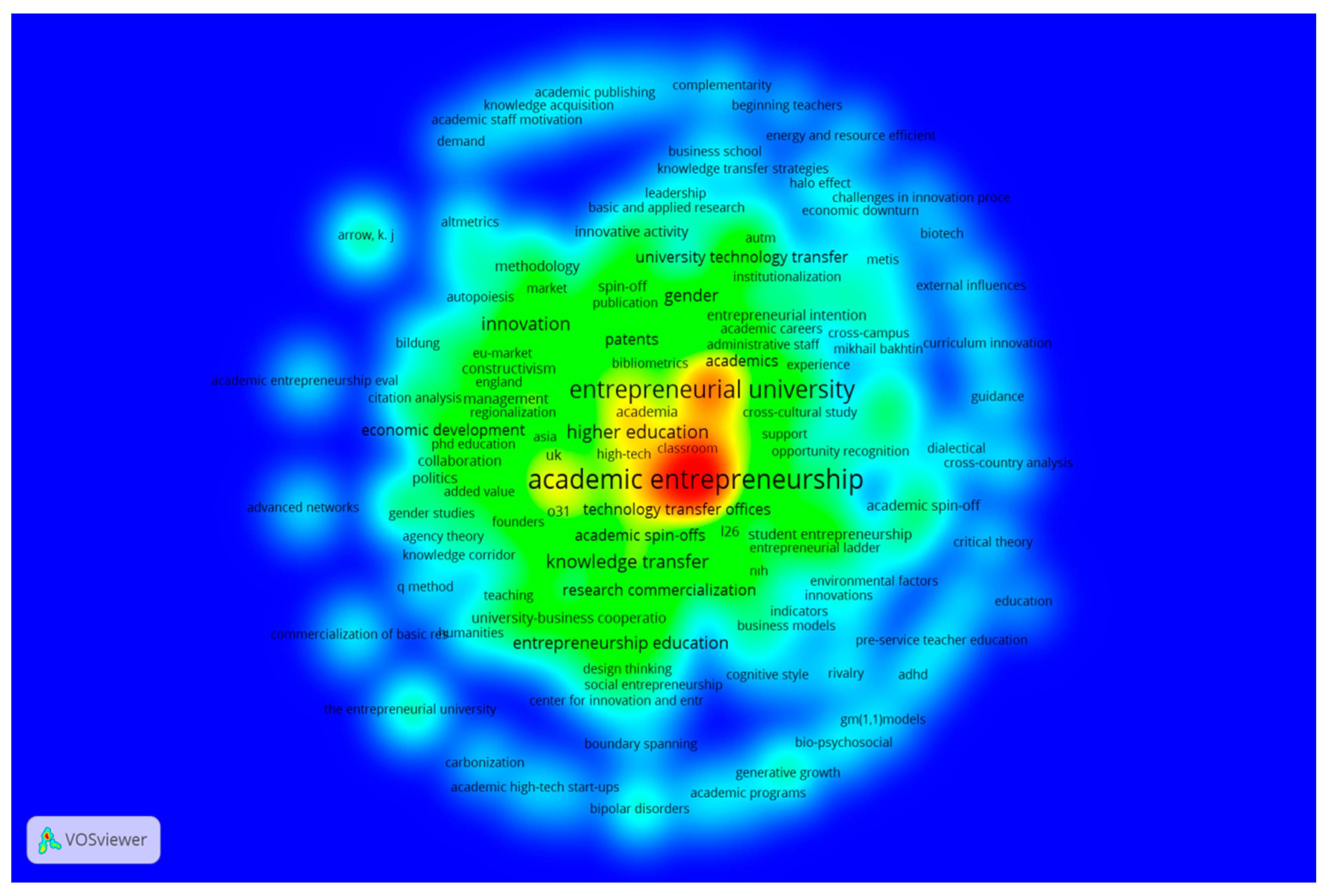
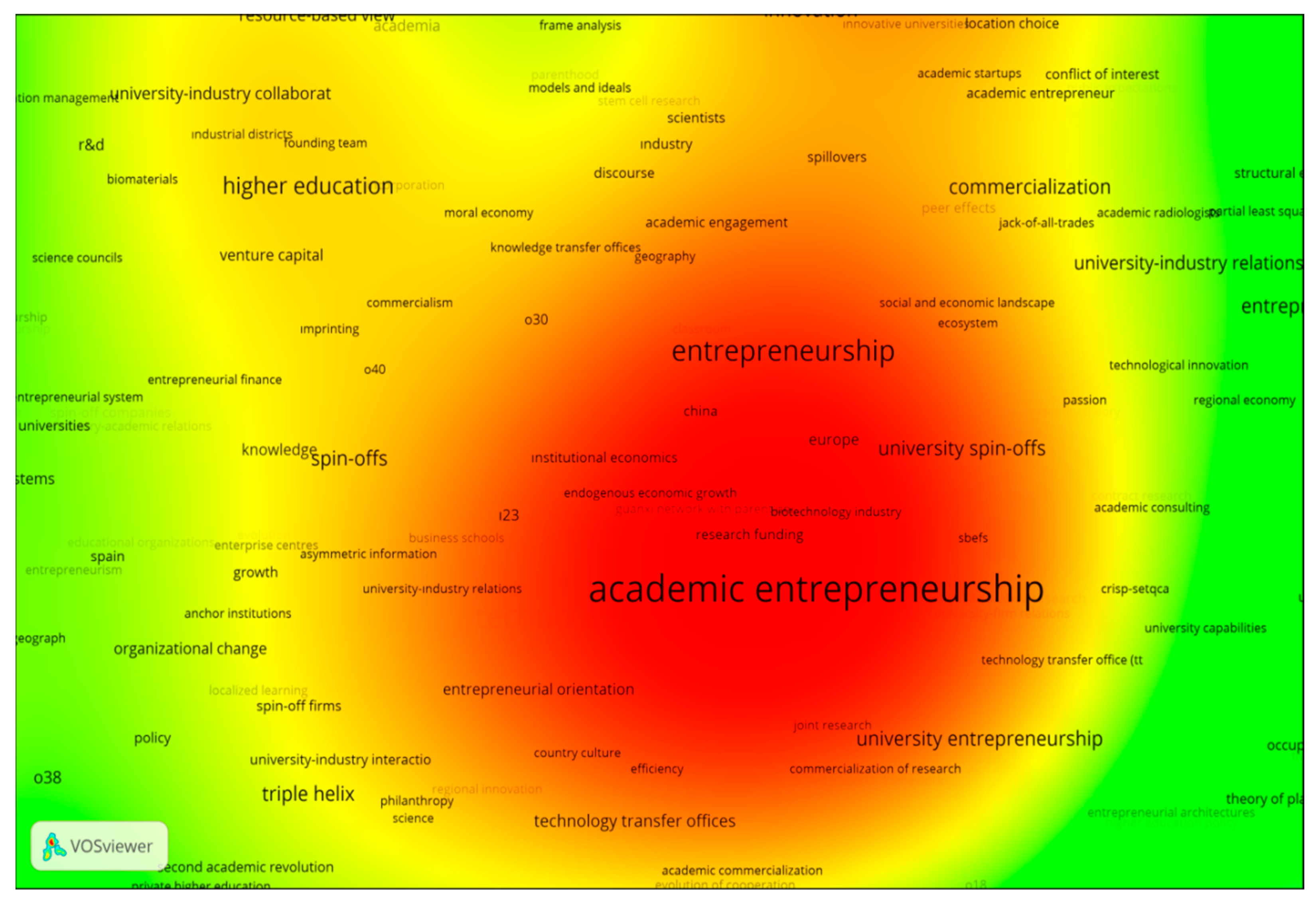
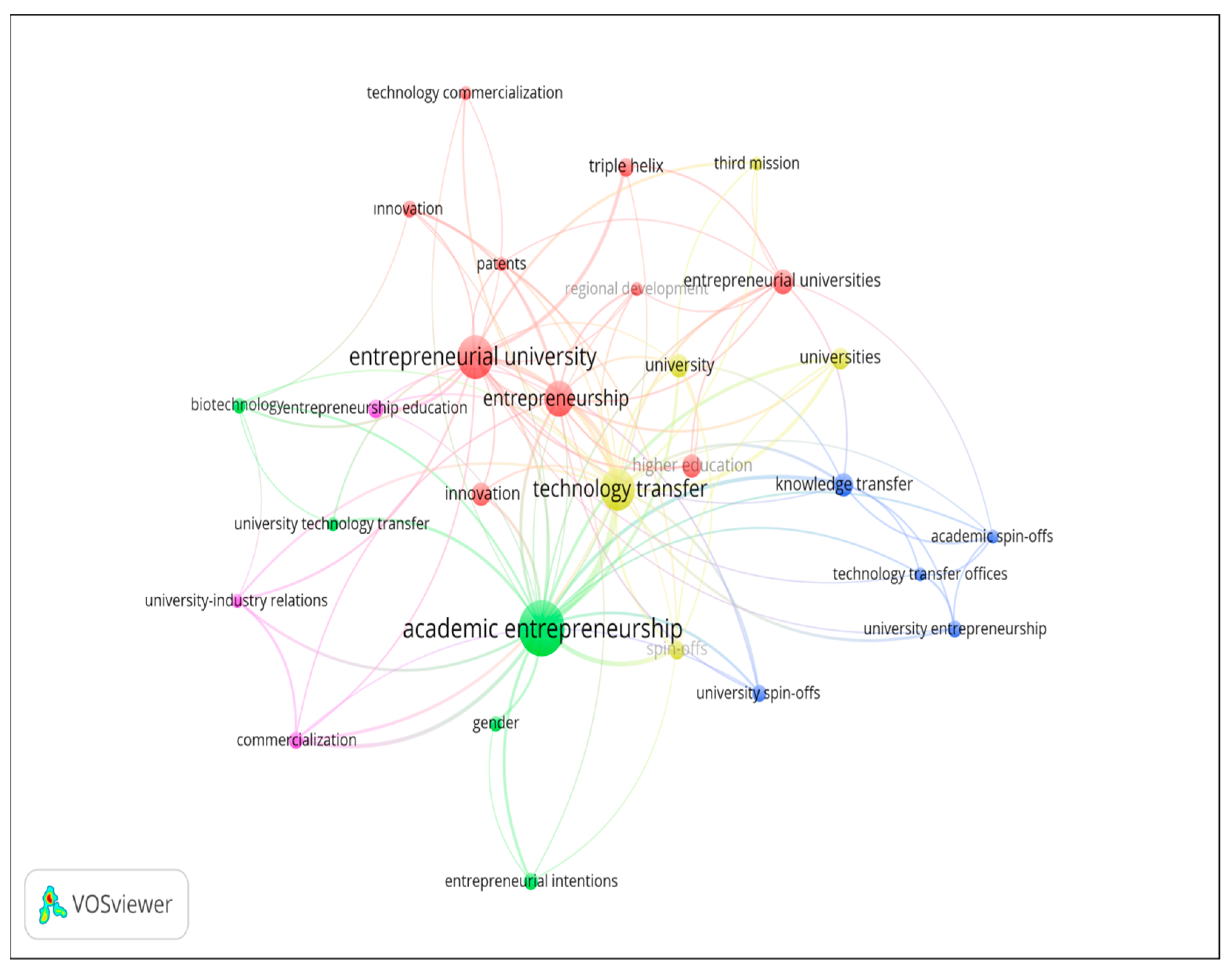
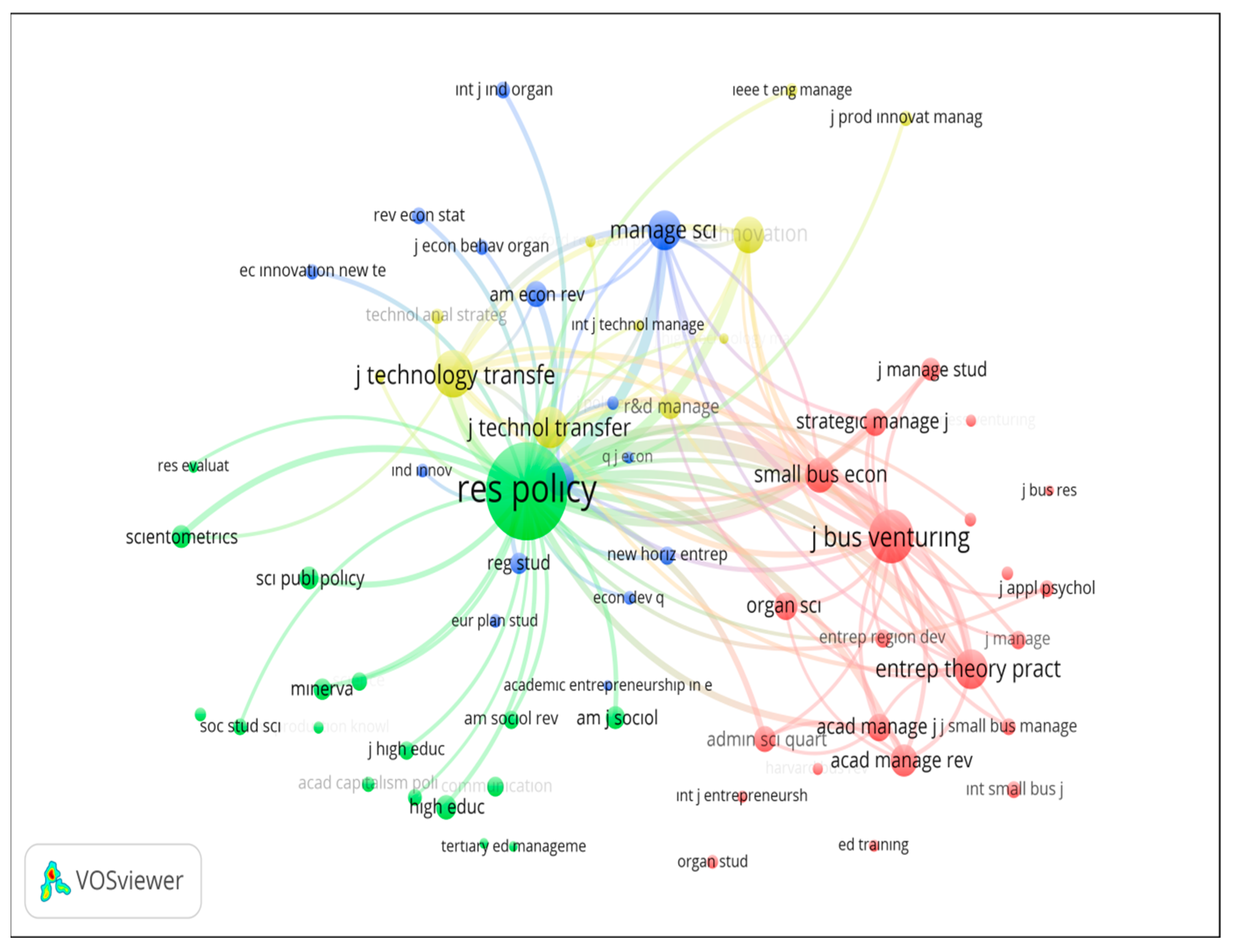
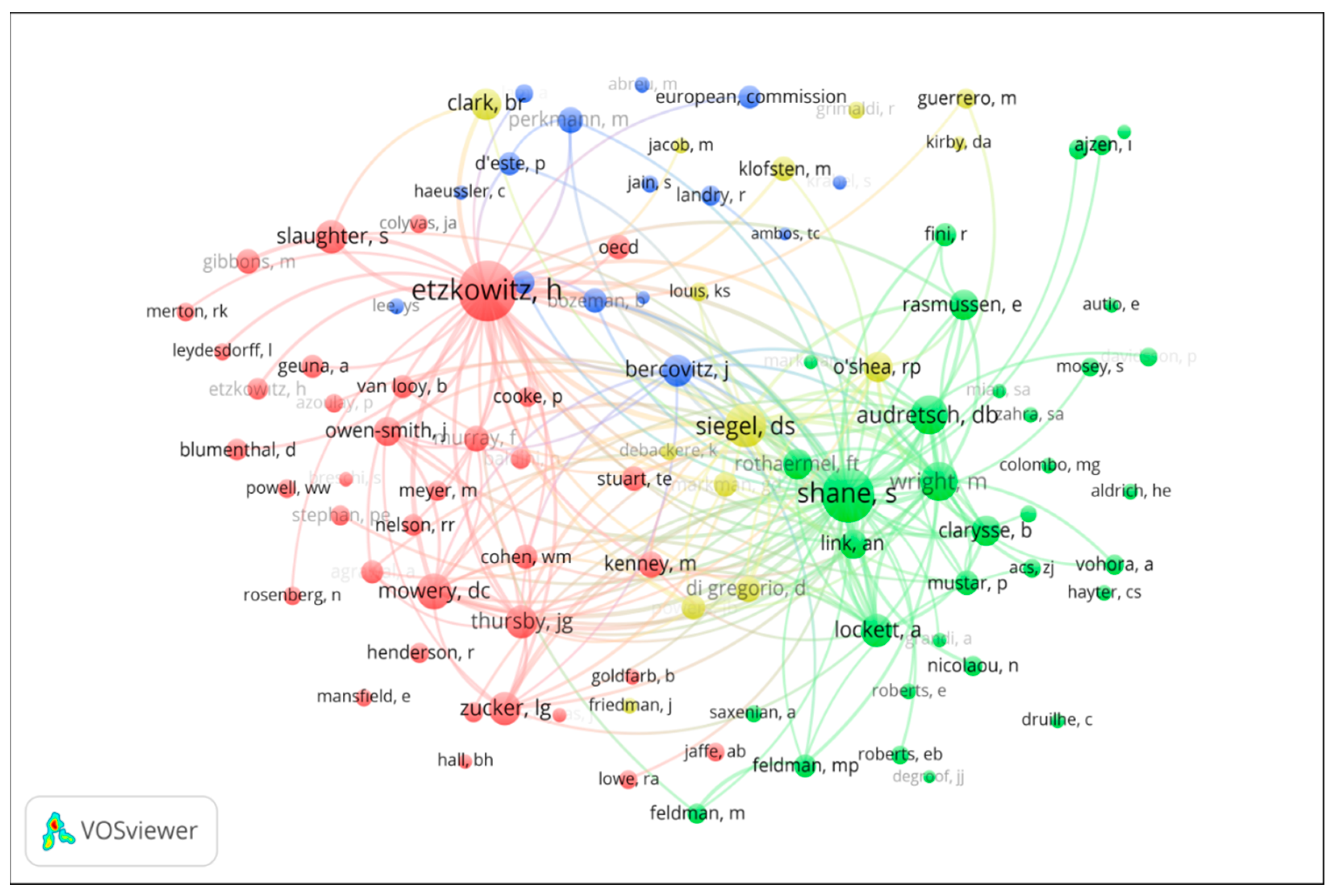
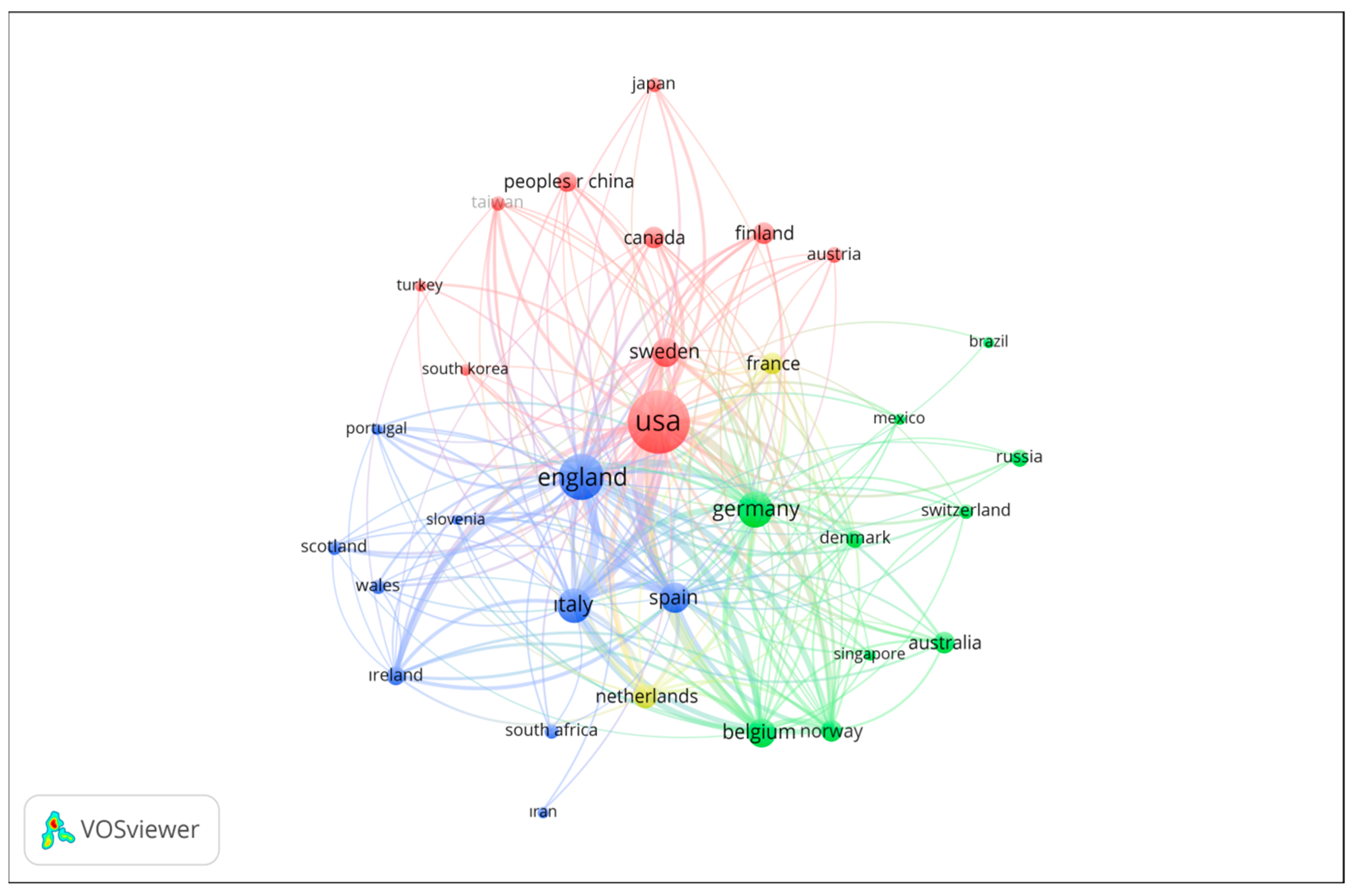
Publisher’s Note: MDPI stays neutral with regard to jurisdictional claims in published maps and institutional affiliations. |
© 2022 by the authors. Licensee MDPI, Basel, Switzerland. This article is an open access article distributed under the terms and conditions of the Creative Commons Attribution (CC BY) license (https://creativecommons.org/licenses/by/4.0/).
Share and Cite
Coşkun, H.E.; Popescu, C.; Şahin Samaraz, D.; Tabak, A.; Akkaya, B. Entrepreneurial University Concept Review from the Perspective of Academicians: A Mixed Method Research Analysis. Sustainability 2022, 14, 10110. https://doi.org/10.3390/su141610110
Coşkun HE, Popescu C, Şahin Samaraz D, Tabak A, Akkaya B. Entrepreneurial University Concept Review from the Perspective of Academicians: A Mixed Method Research Analysis. Sustainability. 2022; 14(16):10110. https://doi.org/10.3390/su141610110
Chicago/Turabian StyleCoşkun, Hüseyin Emre, Catalin Popescu, Deniz Şahin Samaraz, Akif Tabak, and Bulent Akkaya. 2022. "Entrepreneurial University Concept Review from the Perspective of Academicians: A Mixed Method Research Analysis" Sustainability 14, no. 16: 10110. https://doi.org/10.3390/su141610110
APA StyleCoşkun, H. E., Popescu, C., Şahin Samaraz, D., Tabak, A., & Akkaya, B. (2022). Entrepreneurial University Concept Review from the Perspective of Academicians: A Mixed Method Research Analysis. Sustainability, 14(16), 10110. https://doi.org/10.3390/su141610110








